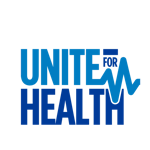Worldwide, people on the front lines have been working around the clock to contain the COVID-19 pandemic. With the United States experiencing the worst surge of the pandemic this holiday season, nurses, physicians, and other health professionals will have their hands full. This is their story.
Inequitable access to health care has long been a challenge in the United States. Even before the COVID-19 pandemic struck, the system was plagued by exorbitant prices, lack of insurance coverage, and significant health disparities based on race, income, and ZIP codes. Compared with other developed economies, the U.S. has the highest health care expenditures, yet that investment is not reflected in its outcomes. It has a lower life expectancy than the average of the OECD (the group of the world’s richest economies), as well as lower levels of health care coverage.
Now, the COVID-19 virus has cast into sharp relief the extent of the weaknesses of the health care system in the U.S. and how social determinants of health can affect outcomes in entire communities. COVID-19, which has claimed the lives of more than a quarter-million Americans and counting, has been the test of a lifetime for the American health care system.
To truly put this into perspective, the United Nations Foundation spoke to front-line workers around the country who are carrying out their jobs in the thick of the ongoing waves of COVID-19. From a firefighter/EMT simultaneously responding to fires — a byproduct of another deep-rooted challenge, the global fight against climate change — and fielding medical calls, to a nurse practitioner providing guidance on health services to the most vulnerable segments of her community, we will be featuring Americans whose experiences illustrate the urgency of equitable access to quality health care, and why we must #UniteforHealth now.
MEET ERIN CARAWAY
Erin Caraway is a registered nurse working in a critical care unit in Baltimore. African Americans make up roughly 31% of Maryland’s population but represent close to 40% of reported COVID-19 deaths. We spoke to her about the COVID-19 situation in Baltimore, historical racial disparities in health, and the importance of ensuring that health workers are receiving the mental support they need during this time.
Describe your job and day-to-day duties on the front lines of COVID-19.
I primarily focus on patients with brain injuries, including strokes, seizures, spinal cord adjustments, and other injuries. The pandemic hasn’t changed my clinical requirements or the level of care I give to patients — everything’s just heightened. We find ourselves kind of rolling with the punches because COVID-19 is so new and we’re adjusting as research and new data come out. We’re trying to do the best we can as new information comes out. It’s about always adjusting and adapting.
What makes the community where you work unique?
Baltimore city is primarily Black — we make up about 60-plus percent of the population. Health disparities are unfortunately rooted in the city’s history, and we can go back all the way back to Henrietta Lacks [a Black woman in 1950s Baltimore whose cervical cancer cells were taken without her knowledge or permission, and became the first immortal human cells, later known as HeLa cells] to have that discussion.
It’s still a sensitive topic for Baltimore citizens and still fresh because there‘s not quite a light at the end of the tunnel to resolving the health disparity issues that we’re seeing specifically in this area. We already know that, unfortunately, COVID-19 infections are disproportionately impacting persons of color more than their counterparts. Many come from low-income families and are in vulnerable jobs. They have to do what they have to do to provide for their family and put food on the table, but that does put them at a higher risk to contract COVID-19 and, unfortunately, potentially infect someone else. I would say you have to literally dig up the tree from the roots instead of clipping the branches, because the issues are so deeply rooted in the city.
How does this deep history of racial disparity affect when and how a patient comes to you and the level of care you provide?
I find more people of color feeling like they‘re not heard by providers because there is mistrust already there. One could argue whether there are preconceived notions about how a person of color perceives how they‘re perceived by their provider, but the data is clear: in Baltimore, our infant mortality rate is alarming. Our diabetic rate in the African American community is alarming.
That even goes back to the White L and the Black Butterfly [used to reference the shapes of white and Black population distributions when looked at on a map], which were ordinances that were put in place to make it illegal for Blacks to live in white communities or force them out of the white communities. More and more people are losing their homes or are being forced out into areas that don’t necessarily have the best living conditions. So how can we tell them to go see their primary care provider or go to the hospital system when they‘re still at the base of Maslow‘s hierarchy of needs: shelter, food, and trying to survive? You can’t necessarily meet your health care needs until your basic needs are met. So, again, it’s about digging that tree up by the roots, instead of clipping at the branches — we would have to first address and recognize the impact and lingering effects of those ordinances, even though they were already overturned.
Can you talk to us about the challenges of being a nurse during the COVID-19 context?
As a nurse, you’re used to family members being at the bedside, helping you advocate for your patient, but some institutions are still not allowing visitors. Family members used to be at the bedside and gather around for the last days and moments with their loved ones. Now, when I find myself on certain COVID-19 units or in the rooms of those who were infected with COVID-19, I have to try to mentally prepare myself to help patients pass on or transition via technology.
We‘re finding ourselves using tablets and laptops and cellular devices so that family members can say goodbye, and it‘s shocking and alarming. You understand why, because you want them to be safe, but it‘s a complete 180 from what we‘re used to, being together, helping everyone get through the hard time of losing a loved one. As a nurse, you don’t always get that moment to process what you just experienced because you kind of have to pull yourself up by the bootstraps, go answer the next call bell, the next telephone, or go see the next patient. So I think one of the overwhelming things is not being able to respond and process what we‘ve been experiencing. We‘re constantly on the run. The dynamic of how we‘re delivering health care is very different now: It‘s really us and the patients more so than it has ever been.
Do you think there‘s a recognition of both the physical and emotional needs that health care workers have right now?
Where I work, I think they‘re doing the best they can to make sure that we‘re keeping our sanity. I was even vulnerable enough to let my manager know when I had a rough patch. And I said: “I can do my job. I can do it effectively, but if I seem a little off or I‘m not as bubbly as usual, this is what I‘m going through and I am seeking help.” She offered so much support when I told her that. She didn‘t make me feel uncomfortable. She made it a safe place, allowing me to be open and honest about it.
To my fellow health care workers on the front lines, I’d say: Please do what you can to utilize the resources at your jobs, your health care companies, or institutions, and seek help out. There is no shame because this is a tough time for everyone. Just because you’re providing health care doesn‘t mean that you’re less worthy of getting help yourself. We have to take care of ourselves in order to take care of the patients.
Can you point to something that makes you hopeful or motivates you to keep going under these tough circumstances?
In the beginning, I think everyone was so supportive of nurses, and nursing organizations even called this the year of the nurse. But as we became more fatigued as a global economy, I noticed that the love and the hurrahs also kind of simmered down as well. So the optimistic and hopeful moments, unfortunately, fade as quickly as they arrive.
But there are different little golden nuggets that pop up here and there that remind you of why you do this and make it worth it. Sometimes it‘s hard to find those moments because it‘s a different kind of climate we‘re in, even in health care. It‘s one thing to work on a critical care unit, but now you work on a critical care unit in a pandemic, and you find yourself wearing different hats that nursing school didn’t prepare you for.
If there’s one thing I would say: Just show health care providers a little bit more grace again because everyone’s impacted by this. Sometimes people forget that we have lost family members and loved ones to COVID too. Most people can call out of work, and get up and deal with the emergency. You can‘t always do that in health care because we still have to walk into those rooms and smile and act like nothing‘s happening because you don‘t want your frustrations or concern to be misconstrued by your patient.
What have your experiences taught you about the importance of equitable health access?
As I mentioned, we‘re finding that across the world and especially in America, people of color are being disproportionately impacted by COVID. African Americans in Baltimore city have a high mistrust of the health care system, and it’s not going to get any better if we don‘t address the problem.
What are the long-term effects of this? Who’s going to monitor these patients when they’re impoverished, financially unstable, experiencing food deserts, and trying to make ends meet? Following up with their provider isn’t at the forefront of their mind when they’re just trying to meet their basic needs. But if no one is monitoring their health care, then how can we help them years down the road when they experience long-term effects that we may not know about now? They’ll be overlooked.
I think the current administration in Baltimore city has done a lot to try to make programs so that these people are not overlooked. But again, until you dig up that tree from its roots, we’re going to lose some people. This is all very concerning and speaks volumes for why health care needs to be accessible and equitable. I‘m genuinely concerned about what’s to come ahead, even if we “come out of this okay.” If we were already having issues pre-COVID-19, then that situation logically has to get worse during COVID-19, and potentially after. We need to address this problem and fix it, and create policies and legislation so that we don’t lose these vulnerable populations.
This holiday season, let us recognize the essential workers who are tirelessly working every day so we can be safe during this pandemic. They provide lifesaving care to those in need–often in precarious conditions.
We are all safer and stronger when we #UniteforHealth.





